Trudeau uses Nunavut to sell reconciliation, conservation as a package deal
Tallurutiup Imanga and Tuvaijuittuq protected areas bring management power and jobs to Inuit
Prime Minister Justin Trudeau wades into a crowd of local residents who had come out to greet him in Arctic Bay on the afternoon of Aug. 1. That morning in Iqaluit, he had announced the completion of agreements with the Qikiqtani Inuit Association to create Tallurutiup Imanga National Marine Conservation Area around Lancaster Sound, and to start the process of creating a similar protected area called Tuvaijuittuq in the High Arctic Basin. (Photo by Jim Bell)
ARCTIC BAY—By the time Justin Trudeau landed in Arctic Bay this past Aug. 1, he had exchanged the perfect skinny business suit and tie he wore in Iqaluit that morning for a more suitable costume.
Clad instead in a pair of jeans and a puffy Patagonia-brand vest slung over a grey sweatshirt, the prime minister had transformed himself from a man of politics into a man of outdoor adventure travel, friend of the conservationist and ally of Indigenous people.
And he was ready to use the small Qikiqtani-region hamlet, population about 860, as a backdrop for the message he’d flown north to convey.
His message is this: by moving ahead on two new marine protected areas in the Arctic, his Liberal government has kept promises made to two constituencies: the southern-based parks and wilderness lobby and the Inuit of the High Arctic and North Baffin.
What Trudeau didn’t mention
At the same time, the word “Nanisivik” did not issue from Trudeau’s lips. That’s the name of the former mine site and naval refueling station located over the hills from Arctic Bay on Strathcona Sound, only 32 kilometres away.
The Nanisivik refueling station, intended to serve Canada’s new ice-capable Arctic patrol ships, was supposed to be completed this year.
Another phrase Trudeau did not mention is “Arctic policy framework.” That’s the new Arctic policy that’s supposed to replace the Stephen Harper government’s 2009 Northern Strategy and 2010 Statement on Canada’s Arctic Foreign Policy.
This past February, Carolyn Bennett, the minister of Crown-Indigenous relations, told the Senate Special Committee on the Arctic that the Arctic policy framework would likely be done by June.
But the Trudeau government has yet to release it. John Higginbotham, a former high-ranking civil servant at Global Affairs Canada and a senior fellow at Carleton University, published a blistering op-ed piece about that in the Globe and Mail on Aug. 4.
Notwithstanding all that, the agreements celebrated on Aug. 1—the completion of deals to create Tallurutiup Imanga National Marine Conservation Area, covering 109,000 square kilometres in and around Lancaster Sound, plus a new protected area called Tuvaijuittuq—give Trudeau the ability to claim that his government has exceeded a promise to protect 10 per cent of Canada’s coastline by 2020.
At the same time, they allow him to brag about the new relationship with Inuit he claims his government created through the Inuit-Crown partnership arrangement born in 2017.
“In addition to exceeding our marine conservation target, we’re also advancing on the path of reconciliation through Canada’s ongoing partnership with Qikiqtani Inuit Association and the Government of Nunavut to inform this important work,” Trudeau declared that morning at a news conference in Iqaluit.
Pre-election posturing
Along the way, he took a pre-election swipe at the national Conservative leader, Andrew Scheer, quoting a speech on Arctic issues that Scheer gave in Whitehorse this past July.
“Not once did he mention the word Inuit,” Trudeau said.
He also quoted a line from Scheer about “unlocking the untapped potential” of the Arctic region.
“On that, he agrees with us. In the Arctic, there’s the potential to advance real meaningful reconciliation with Inuit, based on self-determination and modern land claims agreements,” Trudeau said.
“Potential to create better opportunities for Inuit, potential to ramp up the fight against climate change—that’s the untapped potential our government wants to unlock.”
At the same time, Jagmeet Singh, the national leader of the New Democratic Party, took a swipe of his own at Trudeau, in statement the NDP national office released the day Trudeau visited Nunavut.
Singh said a 2019 report found nearly half of families in Nunavut were hungry and food insecure in 2016, and that recent changes to the Nutrition North Canada program won’t fix that.
He also said the Polar Environment Atmospheric Research Laboratory at Eureka, known as PEARL, could close down in September when its funding runs out.
“He’ll go pose for photos and hug northerners, but when he gets back to Ottawa and behind closed doors, Trudeau is working for the big polluters and corporations that take advantage of Iqaluit families,” Singh said.
Concrete benefits for five Inuit communities
However, QIA President P.J. Akeeagok said the Aug. 1 agreements represent decades of work by Inuit to realize a collective dream.
“Inuit dreamt of a day when those waters would be protected. We imagined a day when Inuit would be true partners with the Government of Canada,” Akeeagok said.
Trudeau and Akeeagok brought the same messages to the people of Arctic Bay.
There, hundreds of residents, their numbers augmented by visiting journalists, regional leaders, RCMP bodyguards, and young Students on Ice participants who had disembarked from the Ocean Endeavour cruise ship that day, jammed themselves into every available square metre of the hamlet’s community hall.
Sharing the stage with elders like 99-year-old Qappik Attagutsiak, and other community leaders, Trudeau repeated his declaration that the day’s events marked a new relationship between Canada and Inuit.
For the Inuit of the region, the package of Tallurutiup Imanga agreements guarantees numerous concrete benefits:
- Through the Inuit impact and benefit agreement, $54.8 million over seven years on fisheries development, governance development and job training through the Inuit stewards program.
- Through other federal programs, spending of $190 million over seven years on new infrastructure for the five communities affected by the creation of Tallurutiup Imanga: Arctic Bay, Clyde River, Grise Fiord, Pond Inlet and Resolute Bay.
A document released by QIA says the $54.8 million in Inuit stewardship program money will be distributed like this:
- $49.25 million for job creation in the five communities, fisheries development, and the creation of governance bodies, including an Inuit advisory board called Imaq, and a joint Inuit-government management board called Aulattiqatigiit.
- $3.65 million over seven years for Inuit-led research, training, monitoring, scholarships and capacity building.
- $1.9 million over seven years to help hunters and trappers organizations in the five communities develop capacity.
As for the $190 million in federal infrastructure money, QIA says it will be flow like this:
- Through Parks Canada: multi-use, country food processing units in each of the five communities.
- Through Transport Canada: community harbour development in Grise Fiord and Resolute Bay.
- Through Fisheries and Oceans Canada: small-craft harbour development in Arctic Bay and Clyde River.
- Partly through the Canadian Northern Economic Development Agency, which is kicking in $10 million: a regional training centre in Pond Inlet.
That training centre in Pond Inlet, incidentally, was negotiated through the Inuit association’s IIBA with Baffinland Iron Mines Corp. for the Mary River iron mine.
And because a small-craft harbour at Pond Inlet, funded by Ottawa and the Government of Nunavut through agreements reached in 2015, is already under construction, it’s not included in the Tallurutiup Imanga infrastructure list.
As for the training of Inuit stewards, that builds on a pilot project that QIA started about a year ago.
Under it, six Inuit from Arctic Bay worked on monitoring sea ice conditions in the Tallurutiup Imanga protected area, archiving information about cultural sites, transmitting knowledge to younger generations, and helping out with search and rescue operations.
IIBA could expand to cover Tuvaijuittuq
And the future could bring more benefits.
That’s because of a separate agreement to create a new protected area called Tuvaijuittuq, covering about 322,000 square kilometres of ocean territory in the High Arctic basin.
It’s dubbed the “last-ice area” by conservation groups like the World Wildlife Fund, since it’s deemed to be the Arctic region where, in the face of global warming, summer sea ice will last the longest.
Tuvaijuittuq includes Pikialasorsuaq, known in English as the North Water polynya, between Greenland and Ellesmere Island.
The Inuit Circumpolar Council has called for an international agreement that would protect this area, under the management of Inuit from Canada and Greenland.
Unlike Tallurutiup Imanga, protected status for Tuvaijuittuq is likely a long way off. That’s because Ottawa and QIA have just started the process and have agreed to interim protection measures only.
But should Tuvaijuittuq evolve into a permanently protected area, the IIBA signed on Aug. 1 could evolve along with it, QIA says.
Naturally, conservation groups involved in the Arctic are ecstatic about the Tallurutiup Imanga protected area.
“We are thrilled to celebrate the protection of this spectacular marine ecosystem in a way that will benefit Inuit and all Canadians for future generations,” Christopher Debicki, vice-president of policy development for Oceans North, said in a statement.
And Oceans North hastens to add that Tallurutiup Imanga became possible, after decades of work, when Shell Canada voluntarily relinquished about 30 oil and gas leases on the eastern edge of the region.
That not only expanded the protected area’s boundaries, it also guarantees that seismic testing and drilling for oil and gas will never occur in Lancaster Sound and its environs.
WWF-Canada, inventor of the phrase “last-ice area,” is equally pleased.
“As the Arctic is warming almost three times faster than our rapidly warming planet, protecting the ‘Last Ice Area’ for communities and sea ice-dependent species has long been a focus of WWF-Canada’s Arctic work, including helping to establish the Tallurutiup Imanga marine protected area,” Megan Leslie, the president and CEO of WWF-Canada, said in a statement.
“We could not be happier to see progress on offering similar protections in Tuvaijuittuq, a region which will only become increasingly vital locally, nationally and globally as the climate crisis worsens,” Leslie said.


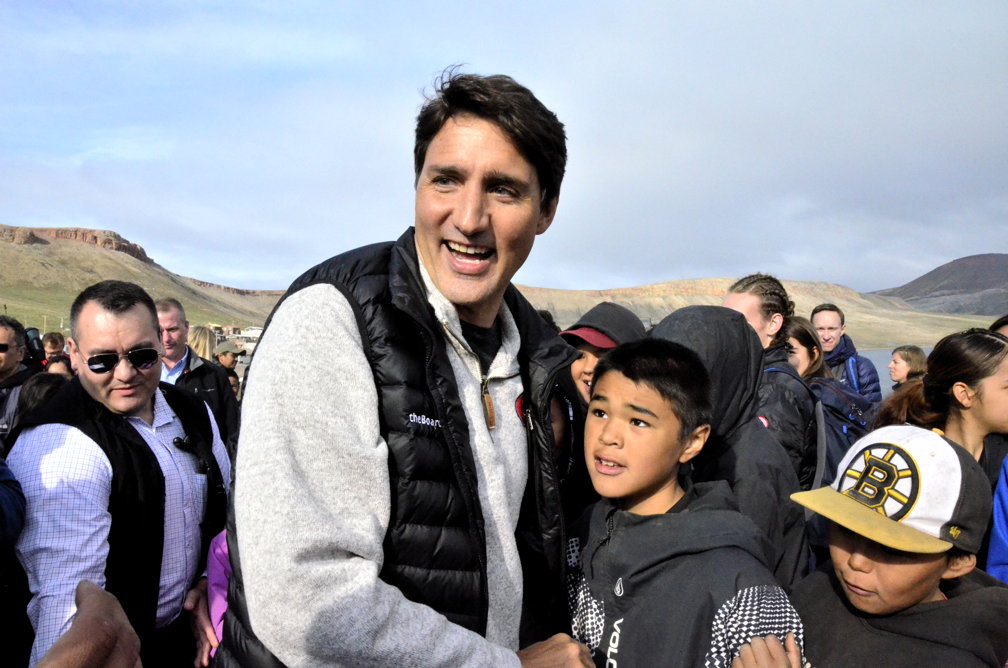
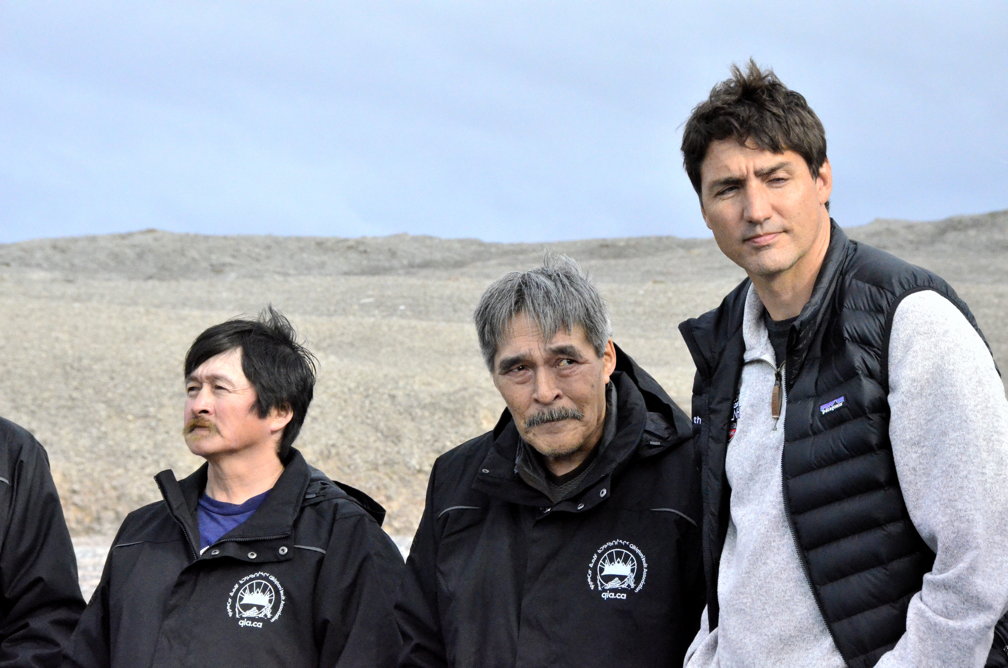
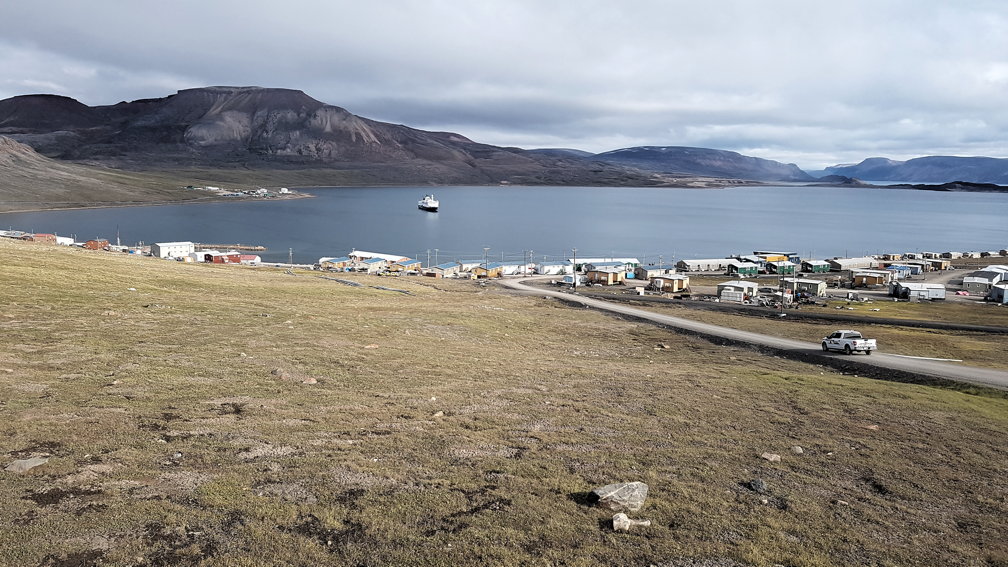
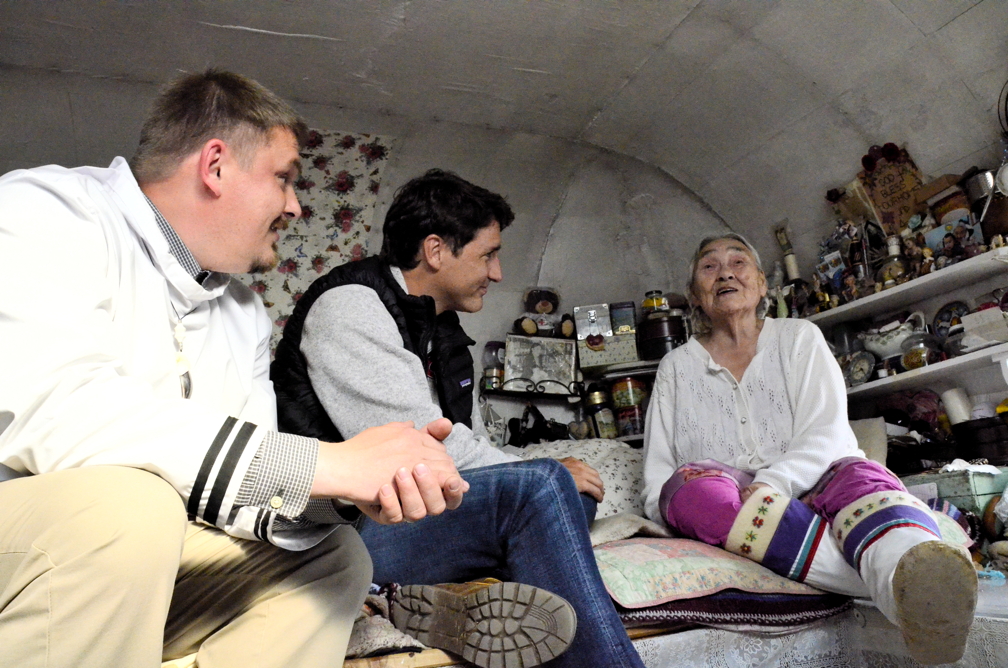
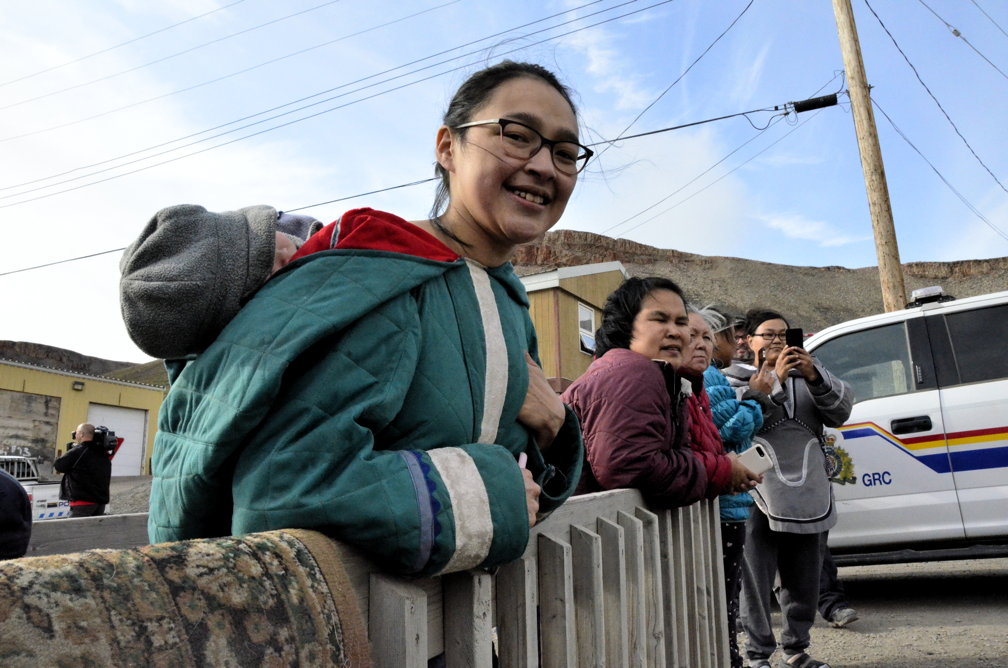
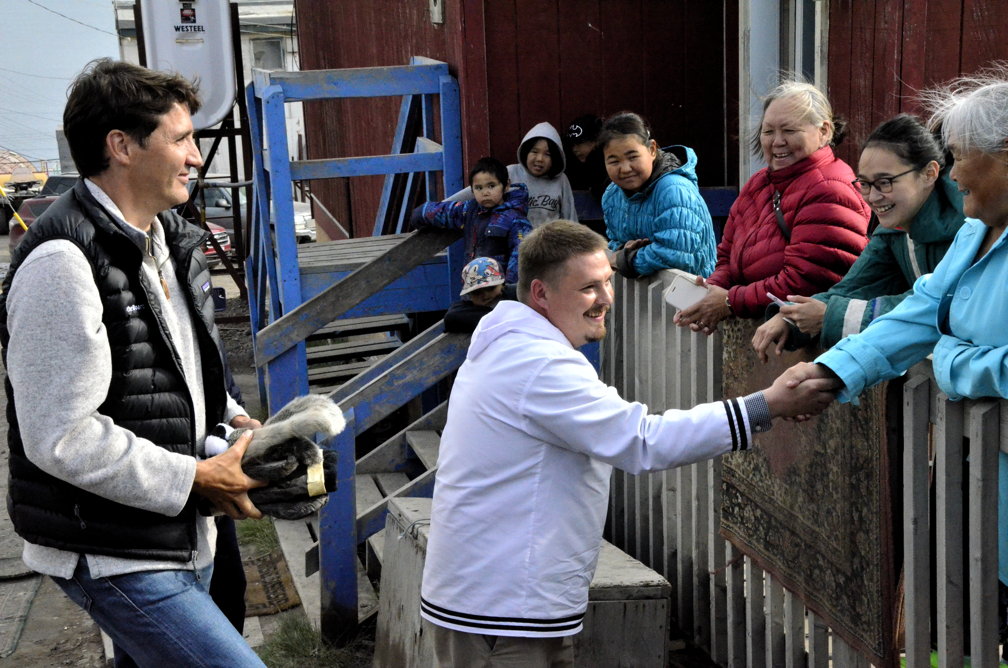
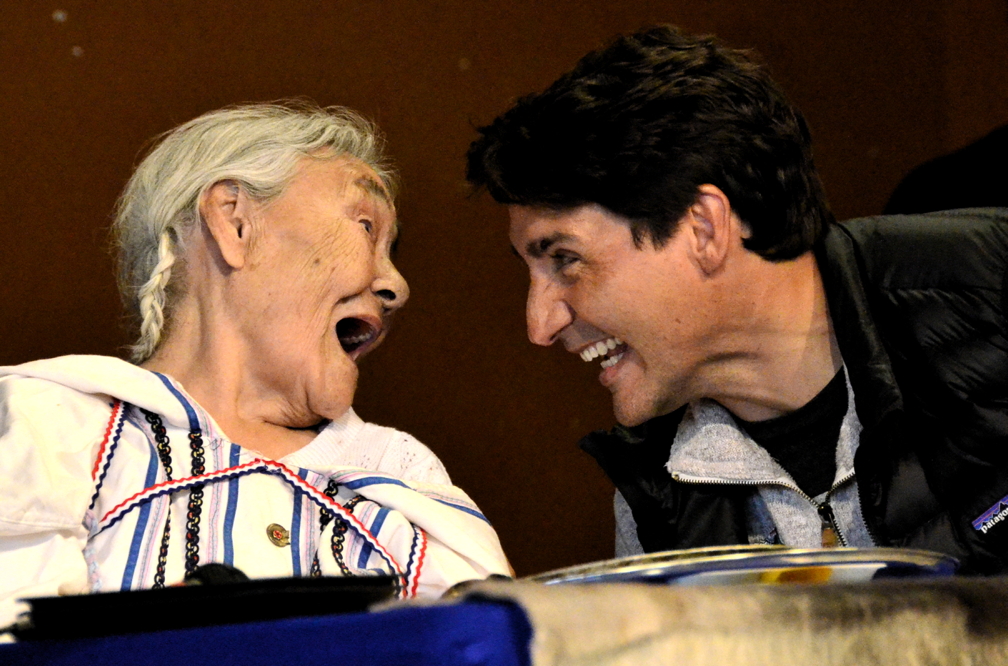


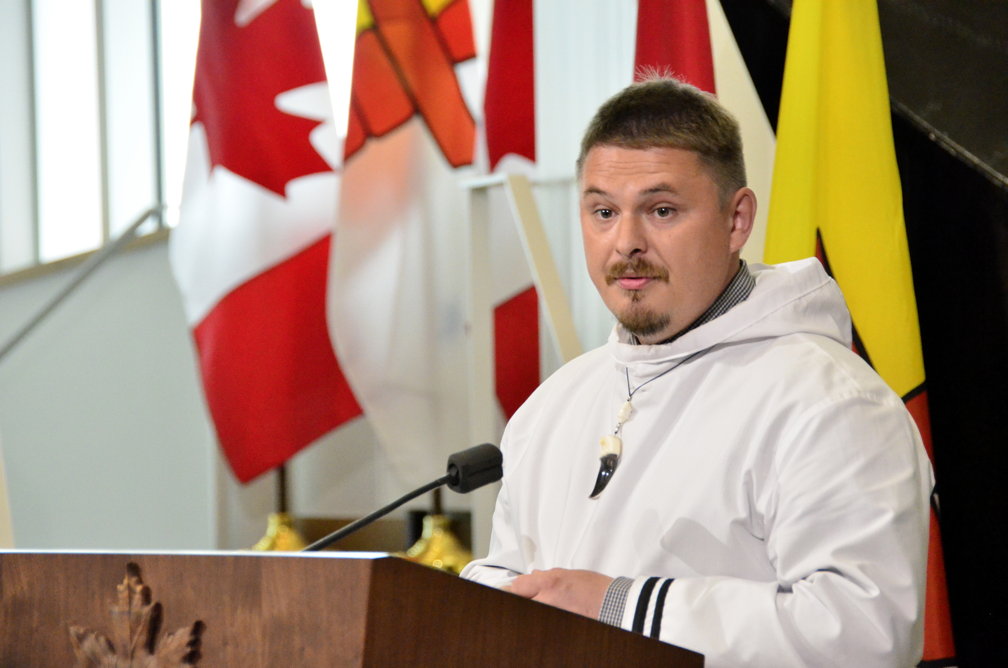
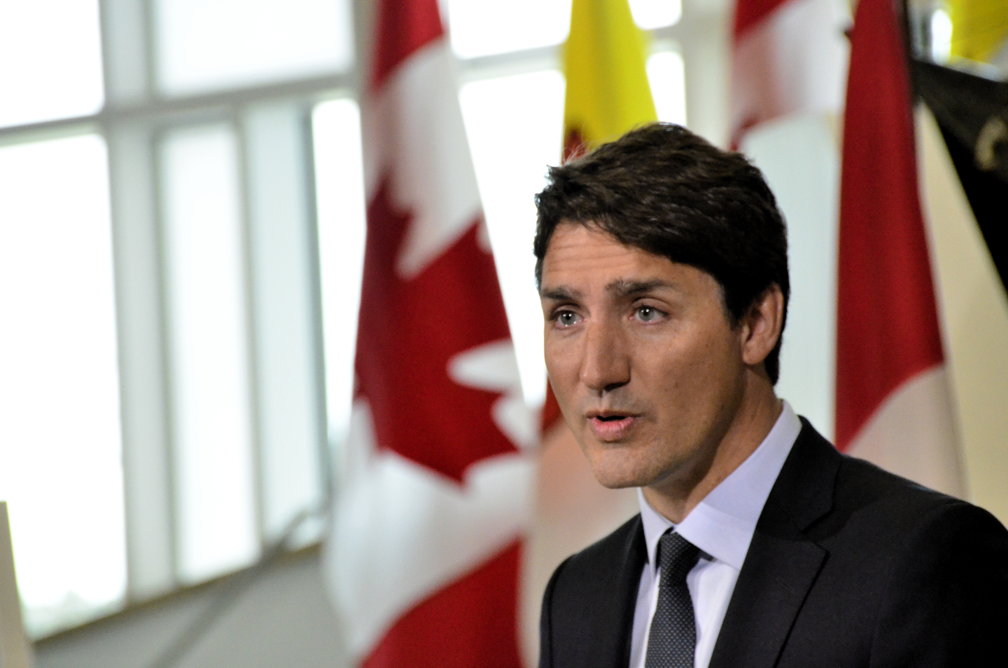
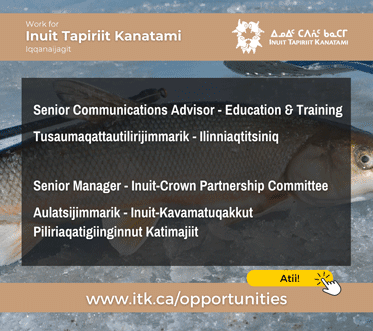


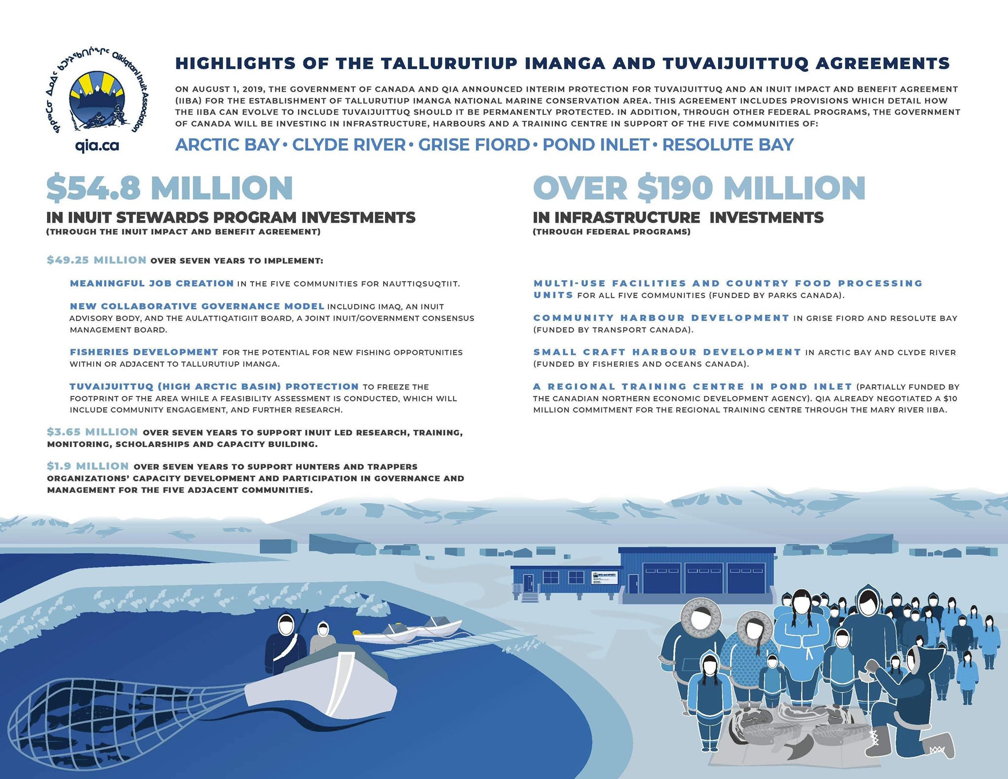
Once again the “Selfie King” Trudeau comes to the Arctic to pander for votes, thinking Inuit are too stupid to realize he’s blowing smoke up their asses like good old Dad did.
Liberals have always had little to no use for the Arctic and its peoples. They pay nothing but lip service to Nunavummuit and just make promises they never keep.
The climate change guru has done absolutely nothing to reduce greenhouse gases in the Arctic. How about spending some of our tax dollars to replace dirty diesel generator stations? How about some Hydro electrical stations? How about solar and wind? How about tidal? Yep, nothing but crickets on that front. Meanwhile, we all have to pay another Carbon Tax on top of all the taxes we pay, which does absolutely nothing to fight climate change. It is ridiculous to take already limited income away from residents of Nunavut, NWT and Yukon with their small populations, who benefit nothing from this tax!
In the end, the Trudeau administration lacked the vision, discipline and machinery to produce a long-term plan for serious Canadian Arctic economic development and security policy. The current approach is just not proportional to the challenges Canada will face in the Arctic.
Electing this drama teach/snowboard instructor to another term is a complete waste of time and tax dollars!
The problem with renewables in the Arctic is, has been, and will remain the fact that you HAVE to still maintain deisel generation capacity. Why? Because the sun doesn’t always shine and the wind doesn’t always blow. So while I agree that there are savings to be had by avoiding some diesel usage, my suspicion is that savings will largely by offset by the need to operate and maintain parallel sets of infrastructure. The cost of electricity generation in Nunavut is about half fuel and half O&M. More infrastructure means more O&M.
Personally I would prefer to see an approach that focuses renewable development in Southern Canada where the interconnected grid allows for the variability of renewables while focusing on maximising efficiency and recapturing waste heat from the diesel infrastructure in the North.
Micro-nuclear reactors are what we should be looking at.
https://www.jwnenergy.com/article/2018/6/micro-nuclear-reactor-designed-remote-canadian-communities-receives-uk-government-funding/
I like Nuclear in theory, but until we sort out how to do it without generating fision byproduct waste that remains dangerous for 200,000 years there is no way Nunavut’s NIMBY crowd will accept nuclear power. What’s needed here is a push on next gen fast breeder reactors that can use existing fision byproducts as fuel.
JT is our Dear Leader and must not be criticized just before the election. Aren’t you just thrilled that he visited?
We were thrilled when our dear leader at the time Harper visited us, but got turned away and were blocked by big heavy equipment trucks.
We people in the Kitikmeot Region vote too, were is the visit to the Kitikmeot region.
seems like we vote for nothing most of the politicians, visits all Nunavut communities when they is going to be an big election, but once they get selected they seem to forget about the Kitikmeot Region.
That is a lot of money and some good jobs for the high arctic, infrastructure too, QIA did a good job!
Justin Trudeau is the worst prime minister we have ever had,,,our indigenous people live next to poverty while millions go towards needy people in foreign countries – why would we want him to run our country again!
This is our country, can we at least take care of us first?
If you look at the amount Canada is sending in foreign aid its no different then what Harper was doing. What I see different is the right wing groups spreading lies and fear to people like yourself that start believing it. Do some research and you will see its not true and that the PM has done more for Nunavut in less then 4 years then what Harper did in a decade.